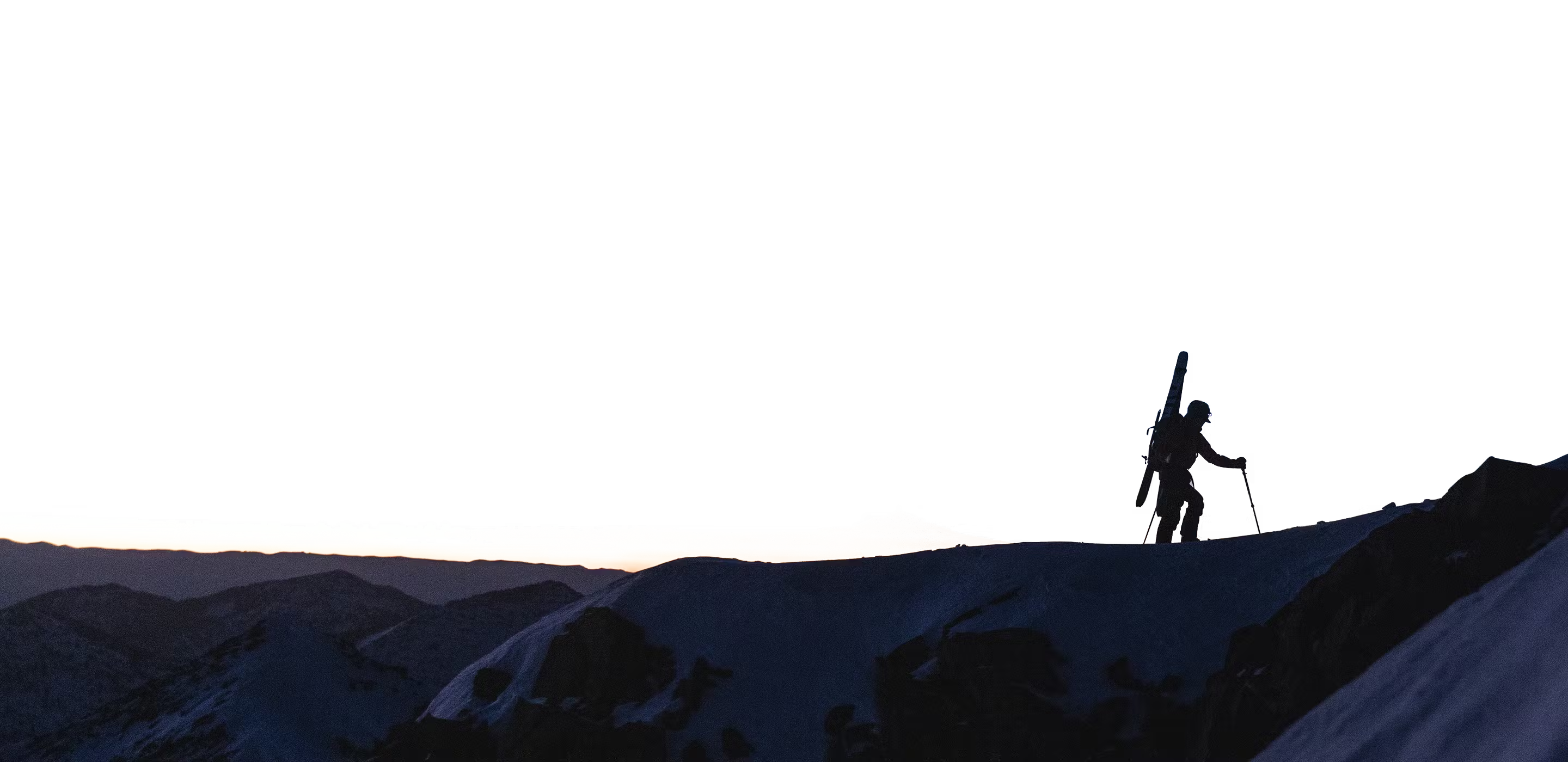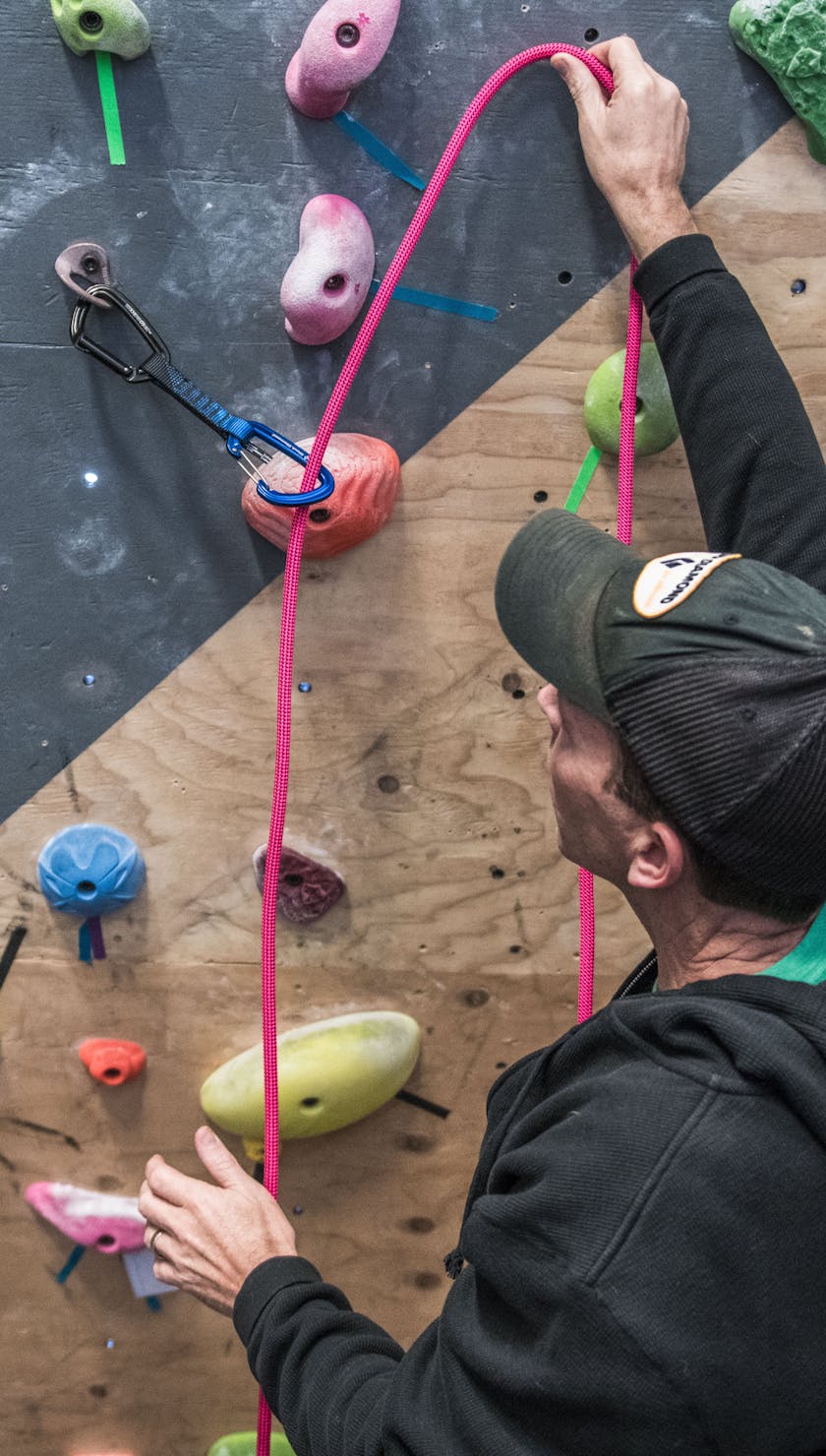To oppose or not to oppose, that is the question. What ‘tis nobler for ye climbers bearing slings and biners? Should you keep both gates facing the same direction, or should they be opposed? Aye, now here’s a topic for the ages!
In this Gear Myths, we’re specifically talking about quickdraws. You’ve probably discovered that climbers vary of opinion when it comes to the likes of opposing their biners on a single draw, or keeping both gates facing the same direction. Rack up with enough borrowed quicks at a sport cliff and you’ll “quickly” realize they won’t all be set up the same.
Some will be opposed, as seen here:
And some will face the same direction, seen here:
So, what’s the deal? Why do some climbers intentionally swap the biners on their quickdraws to create that opposition?
In search of answers, we chatted with some hard-charging pros who clip more bolts than you can count, and then we took it to the house, chatting with our very own Climbing Category Director Kolin Powick, to see if there’s any science or safety factors behind the opposition theory.
First up? BD Athlete Joey KindKid Kinder.
Kinder has been in the sport climbing game for a few decades now, consistently sending up to 5.14d, while also bolting and establishing some of the country’s best routes. When asked about his quickdraw orientation preference, he was at the ready.
“I oppose,” he explained. “I learned simply by having to share the same draws with friends and I needed to keep mine unique so we would not mix them up. I have it dialed now so it’s what I prefer. I see no lack in safety and have never once had an issue.”
Image: Tristan Greszko
Fair enough. Joe should know, right?
We also asked BD Ambassador and photographer extraordinaire Tim Kemple his direction of choice.
“Opposed. Dunno. Always been that way,” he wrote.
OK … but Kemple also learned to climb with Joe back in like 1990 or something. Maybe we should get another opinion.
How ‘bout the world’s greatest free-soloist turned sport climber? Yeah, that’s right. We’re talking Alex “Freerider” Honnold. We caught up with Honnold after a day of clip-ups near Vegas to get the low-down.
In typical Honnold fashion, he simply replied:
“I don’t think it really matters.”
He did elaborate, however. But just barely.
“I don’t have a preference—I don’t really notice either way. Mine are just set to whatever the default is. Or whatever my partners do.”
So, for Honnold it doesn’t matter. Sounds about right.
But what about our BD big wall power couple Babsi Zangerl and Jacopo Larcher? We laid down the question while they were hanging in the portaledge during their recent second ascent of El Cap’s Magic Mushroom (5.14).
Jacopo fired back first:
I normally have them facing the same way. I actually don’t know why…. but I’ve always been using them this way :-) There is no real reason.
Cheers from the Valley.
And as you may have guessed, Babsi agreed.
Image: Will Saunders
My quickdraw-biners are always facing the same way. The gates are facing out. I always did that since I started climbing. Don’t really know why. Better handling for me.
So, that’s two for facing the same and two for opposed and one who … well, just doesn’t care.
To round this informal survey out, we felt we needed to step outside the pro-climbing spectrum and ask someone who doesn’t necessarily focus on climbing 24/7, but who does love himself a good route from time to time and can throw down when need be. We looked to an industry expert—renowned photographer, adventurer, and contributor to the climbing community.
As usual, this individual had an interesting point of view.
“Whenever you buy a quickdraw they come facing the same direction,” they wrote, “which is totally fine for me. But when I make my own, or create an alpine draw, I always oppose. Maybe it’s out of habit?”
Interestingly, this perspective spawned a point worth looking into. Are most draws sold facing the same way? And even more important, is there a reason for that?
A quick search around the interwebs confirmed this sentiment.
Most companies do sell their draws with the biner’s gates facing the same direction, HOWEVER, it’s worth noting that there are actually a few companies that do sell quickdraws with opposing carabiners.
Even doubly interesting is this little-known fact:
About 10 years ago, Black Diamond was among the opposition. In other words, we were sellers of opposing binered quickdraws.
So what changed?
Well, a loud-mouthed, opinionated Canadian who ran the Quality Control lab spoke up. That’s right. We’re talking about our climbing gear guru, Mr. QC himself, Kolin “KP” Powick .
You may have noticed by now, but KP has an opinion on EVERYTHING. And for good reason too. There are few people in this world who spend as much time analyzing the minutia of climbing gear, and that’s a fact.
When KP, a devout gates-facing-the-same proponent, had court with the then Climbing Category Director, he didn’t hold back on the downfalls of opposing biners. And to this day, he holds to this belief.
Here’s the deal according to KP:
“There’s two reasons you want gates facing the same way. The science reason and the mental reason,” says KP.
“The science reason is you’re supposed to place the biner on the bottom of the quickdraw with the gate facing the OPPOSITE of the direction you’re climbing, right?”
Right. (Editor’s note, we actually didn’t answer because when KP talks it’s best just to listen.)
“So with gates facing the same, if I’m climbing to the right, I place the draw so the gates are facing to the left, and consequently the spine of the biners are facing the direction I’m climbing. When I climb, the rope pulls the quickdraw up a little and rotates the top biner slightly, pivoting on the bolt hanger about the spine. If I were to fall, the spine of the top carabiner is lined up with the bolt hanger, concentrating the load exactly where you want it to be … along the major axis of the carabiner, its strongest orientation.
Image: Andy Earl
“So if gates are opposed, and I do that same exact thing—and of course it depends a little on the orientation of the bolt hanger—but with the same scenario, you run a risk where the top carabiner can rotate up, and snag on the bolt hanger where the gate meets the nose of the carabiner, and should you fall at that moment, it’s possible that the bolt hanger gets hung up at that gate/nose interface resulting in a weak loading scenario, and in an extreme case, your draw could actually unclip.”
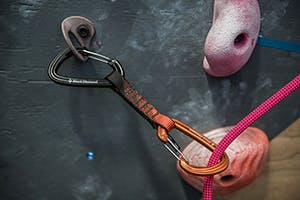
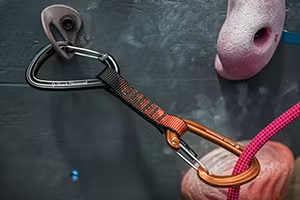
Images: Andy Earl
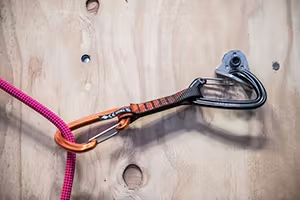
KP’s safety point seemed valid, but we still headed to the BD woody to test the scenario.
Needless to say, we were surprised at how easily a quickdraw can come unclipped from a draw when the biner rotates and the gate aligns with the bolt hanger.
Check this out.
As for KP’s mental reason?
“Everybody learns that you put the rope-end gate facing the opposite direction you’re climbing,” he explained.
“So when people are climbing, and I’ve seen it with experienced climbers and new climbers, they know they’re gonna climb right and the gates are the same, they go, “bottom gate faces left, top gate faces left. Simple.”
Aye, but here lies the rub, according to KP.
“Guaranteed, when gates are opposite like this, they’re gonna go right, bottom gate goes left and then they look at the draw and they’re like, ‘oh, wait, what?’ And they have to mess around with it to figure out which direction the top gate goes so the bottom gate is facing the correct direction!”
“So that’s the mental reason why you should keep your gates facing the same direction,” reiterated KP.
CONCLUSION
Despite the fact that KP has never heard of an issue due to his “bolt hanger” scenario with opposing biners, we still recommend playing it safe. Plus, who would want to ruin an onsite by pumping out on a clip from spending too much time figuring out the correct orientation of your bottom draw?
We think keeping your gates facing the same way is the way to go. And that’s why, after hearing KP’s rant 10 years ago, BD started selling quickdraws set up that way.
Oh, we did want to check with one other climber before signing off on the gates facing the same set-up. Why not see what the world’s best sport climber thinks?
We asked BD Athlete Adam Ondra—the man who’s won lead world cups, onsighted 5.14d and climbed the only 5.15d in existence—what he prefers.
“Gates facing the same,” he replied. “Additionally, if you clip ‘rings’ (most of the protection on the Czech sandstone), it is safer.”
So, there you have it.
If Ondra keeps his gates facing the same way on his draws … we think you should too.
—BD Content Manager Chris Parker
Featured Gear

